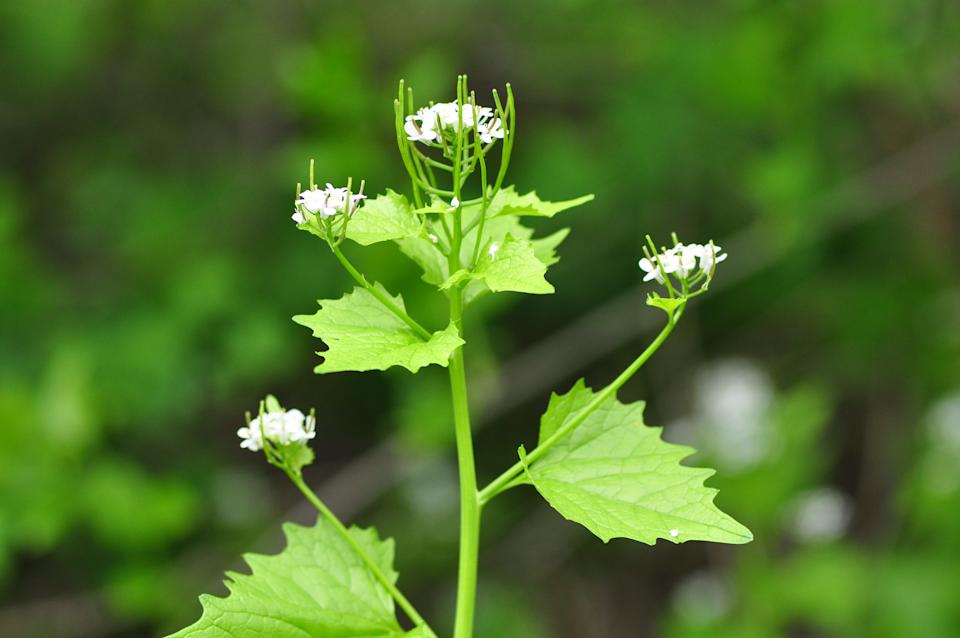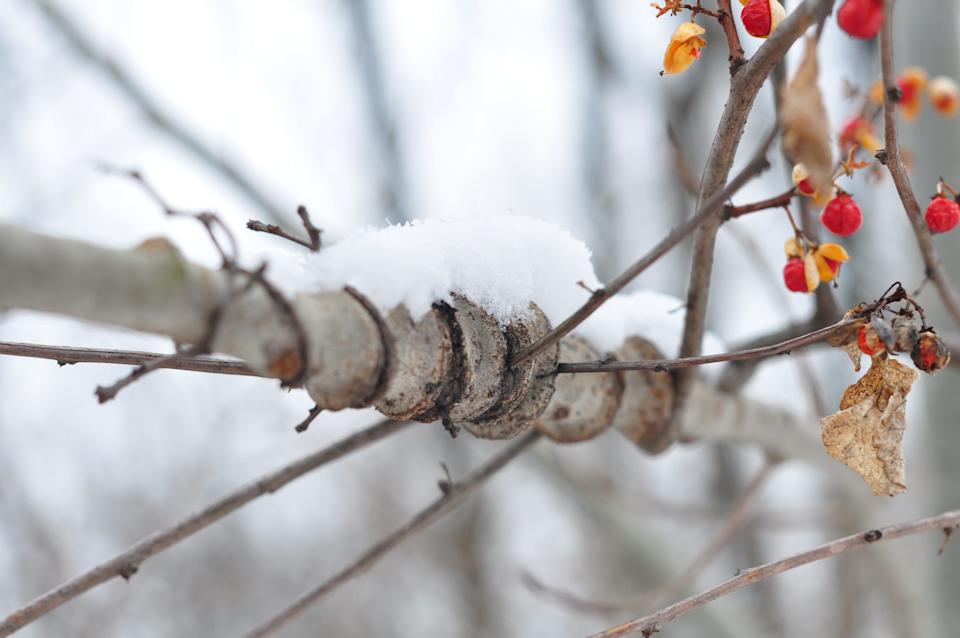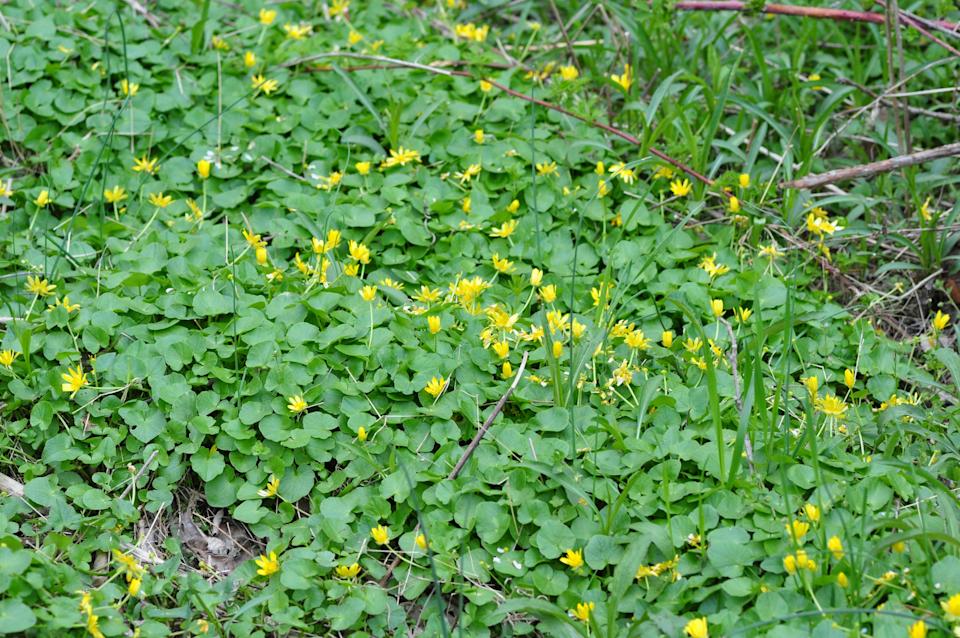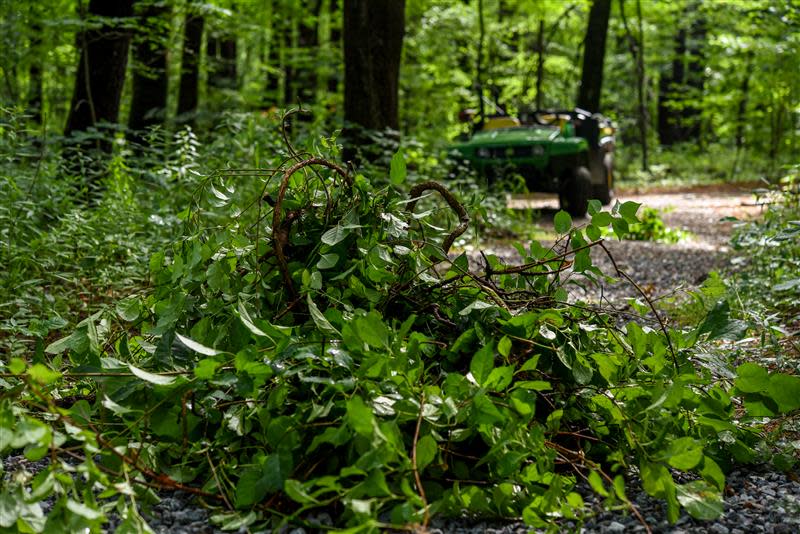It may seem inconsequential in the grand scheme of maintaining biodiversity, but finding a favorite spot — a garden bench, a walking path, a picnic area — is the first step for gardeners in the lengthy process of eradicating invasive species from the environment.
“Pick a spot that matters to you,” is the advice Karro Frost gives home gardeners when it comes to removing invasive plants from the landscape. Identify the plant, learn its cycle and uproot it, cut it down, whatever works at that stage in its life cycle. Then, keep checking to make sure the invasive plant doesn’t regenerate.
“Always start at that spot and work outwards,” Frost said, explaining that keeping the area free of invasive species is a matter of vigilance and a project that can take several years. She also suggests working with friends and neighbors on the project.

Garlic mustard is a low growing plant that forms a dense ground cover known for its garlic odor when crushed. It has a two-year growing cycle focusing on spreading in the first year and flowering in the second. The shape of the leaves change from from its first year and it grows tall stems with small white or pink flowers. In its first year, it can easily be pulled from the soil after a rain. It is recommended gardeners pull the plant in its first year before it has the opportunity to flower and seed.
Frost, a plant restoration biologist with the Massachusetts Division of Fisheries and Wildlife, works to ensure the state’s rare plants stay in the landscape. That means she addresses the proliferation of invasive species, works to deter hungry deer from chowing down on certain species and may even remove some plants to ensure the rare ones can thrive.
Invasive species — the state maintains a list that is updated regularly — impact the whole local ecosystem. Frost cited a Rhode Island study where researchers released one group of frogs into a stand of Japanese knotweed; another into indigenous vegetation. The frogs who hunted in the knotweed lost weight as opposed to those released in local vegetation that gained weight.
“They were starving in their native habitat,” Frost said, explaining frogs eat what is eating the vegetation.
Invasives thrive in their new environments as they lack predators, diseases and other plants in their native environment that keep them in check. These grow and reproduce faster than local species and monopolize available light, water and nutrients. In dense stands, they can alter air temperature, soil chemistry and stop native species from growing.
Ecosystems, Frost said, are very specialized, pointing to the monarch butterfly caterpillar which has evolved to eat only milkweed leaves. If the plant is crowded out of its natural habitat by black swallow wort, an invasive plant that is toxic to those caterpillars, it interrupts the established food cycle.
It is a cascading effect: Caterpillars eat the plants, birds eat the caterpillars, predators eat the birds.
“Plants are the bottom layer of the ecosystem,” Frost said.
How invasive species spread
Invasives move from garden to garden in many ways — when birds eat the fruit and drop the seeds, by lawnmowers and snowplows. They are carried on the wind, in the water and on people’s shoes.
First steps for gardeners intent on eradicating invasive plants starts now with the greening of the state.
“Garlic mustard is out there now,” said Jennifer Forman Orth, an environmental biologist with the Massachusetts Department of Agricultural Resources (MDAR). Garlic mustard, a low-growing vine, is a plant that greens early, sometimes staying green through the winter months. Now is the time to bend over and pull it out by the roots.
“It’s best to catch it before it flowers,” Forman Orth said, explaining that if it’s pulled before it flowers it can be left on the ground to dry out and then bagged and tossed. “Gardeners should attack the garlic mustard at the earliest part of the (growing) season.”
Once the plant flowers, even if it is pulled, it retains enough moisture to complete seed formation and regrow.

Asiatic or oriental bittersweet has been sold as an ornamental plant; birds love the berries. However, the vines encircle or girdle surrounding trees and eventually strangle them; it is one of 72 invasive plant species listed by the Massachusetts Department of Agricultural Resources that proliferate in Central Massachusetts, crowding out native species and changing eco-diversity.
Experts say that every invasive species has a timetable, a growth cycle, and it’s important to know when best to address the plants. Black swallow wort should be dealt with before it flowers and forms pods.
Japanese knotweed, an herbaceous perennial with a hollow stem that can resemble bamboo, should be cut back as it emerges in the spring to starve it of sunlight; but not completely, Frost warned as it spreads laterally if cut back to the ground. In addition, its roots, rhizomes, can regenerate almost, seemingly, at will if not extracted entirely.
Many plants now considered invasive species were intentionally cultivated — Japanese knotweed arrived in the U.S. centuries ago, planted as an ornamental, used for animal feed and planted to control erosion along embankments and culverts. Garlic mustard was a potage plant, intended as a salad ingredient.
“No one realized that once it spread it would be so hard to eradicate,” Forman Orth said of the Japanese knotweed.
Eradication of invasive plants starts with awareness
Steve Conaway, director of horticulture with the New England Botanic Garden at Tower Hill, advises gardeners not to panic when it comes to invasive plants. “They are just living things occupying space in our gardens and natural areas. Get to know them, learn their cycles.”
Eradication begins with awareness. Even as the state lists plants as invasive, there is no prohibition on their purchase — Oriental or Asiatic bittersweet was introduced as an ornamental and there was a time when municipalities planted Bradford pear trees as street shade trees.

Lesser celandine is an invasive species that forms dense mats in the spring that crowd out native wildflowers. Spread readily by tiny tubers in the soil, experts advise gardeners to dig them out carefully to avoid their spread. It is just one of six dozen invasive plant species that proliferate in Central Massachusetts.
As invasive plants crowd out native species, they can get a foothold in the environment, replacing dying indigenous ones.
“The landscape is changing,” Conaway said, adding that it is up to the state’s citizens and gardeners to keep informed, and home gardeners to understand what they are planting and to opt for native plants.
Anything labeled as “grows quickly, spreads easily,” may be an invasive species and difficult to control, according to Frost.
While Massachusetts maintains a list of invasive plants, there is no statewide program to control or remove the plants. Compounding the issue is the resilience of the plants: Japanese knotweed can regenerate from root hairs and Asiatic bittersweet can re-root itself when a vine is in contact with soil.
And it is illegal to move invasive plants from one site to another without specific permissions.
Attack invasive species early in the growing season
Efforts to control invasive plant species are on-going; these plants, Asiatic bittersweet, pictured before fruiting with characteristic red/yellow berries. were removed from trees at the New England Botanic Garden at Tower Hill.
Experts suggest addressing the problem early in the growing season. Gardeners should be mindful of carefully discarding the plants, not just “tossing them over the fence” into a neighboring yard. Those who compost could set aside a special area just for the invasive plants and once dried, these could be bagged and discarded. Most municipalities frown on including these in yard waste collection bins.
The agricultural school at the University of Massachusetts at Amherst, the University of Connecticut, among others, maintain public websites that gardeners can access for information on how to identify the plants and dispose of them safely. Experts also suggest several phone applications including inaturalist, PictureThis, Pl@ntNet, among others, that can be used to identify invasive and indigenous species.
Worcester resident Joseph Johnson, founder of the Facebook group Invasive Plants and Insects of Central Massachusetts, is working to create a pollinator pathway through the city to link six of its dedicated open spaces planted with native species through corridors that allow indigenous insects access to local flora. These pathways could increase the number of beneficial insects and humming birds in the city.
“I’m excited to be taking action,” Johnson said.
This article originally appeared on Telegram & Gazette: How to start removing invasive plant species from your garden, yard
